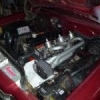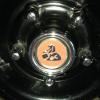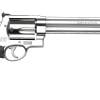Marty, can you post up a pic of your rear brakes please?

#51

Posted 17 November 2014 - 11:43 AM
#52

Posted 17 November 2014 - 04:20 PM


#53

Posted 17 November 2014 - 05:31 PM
All looks assembled correctly Marty.
So you say the front piston of the wheel cylinder will move up to 15mm but the rear one doesn't move at all.
If you can tie wire the front shoe at the top so it won't move will the rear piston then work and activate the rear shoe?
Personally I don't believe it's a good idea to operate the brakes without the drum on. Maybe tie off the top of the rear shoe so its movement is limited.
I don't know if it is an illusion however it appears that your adjuster at the bottom is wound out a long way for a new set of STD shoes and drums that are only marginally oversize.
My adjusters are wound right in (skimmed STD drums and std relined shoes to match) and the shoes are just skimming the drums.

#54

Posted 17 November 2014 - 08:54 PM
I agree about doing this with drum off is not a great idea but it takes a lot of things out of the equation.
Here's a pic at a better angle for adjuster.

#55
 _deantl2003_
_deantl2003_
Posted 17 November 2014 - 09:22 PM
Hi Mardy, I am not a brake expert but when you bleed rear brakes do you get good squirt of oil out nipple? looking at photo everything looks in place and check out over again to make sure everything its in place and try adjusting adjuster till you hear its rubbing drum then everything should work.....have look if shoes are catching on back plate behind drum and did you get brand new rear shoes? I hope this is going to give you some help
#56

Posted 17 November 2014 - 09:41 PM
This may be irrelevant, but here goes...
We recently had a car trailer made and had all sorts of brake dramas, primarily one side not working correctly.
Ended up determining that the supplier had incorrectly fitted 2 Left had side drum brake assemblies to the trailer.
The effect of this was that one side didn't work at all.( the other side locked up all the time as it was adjusted so tight to try and compensate for the other one not doing anything).
This may not be so relevant for hydraulic brakes?? and Not even sure Toranas have RHS and LHS drum brake assemblies...but
clutching at straws...
Regards
Col
#57

Posted 17 November 2014 - 09:56 PM
This may be a complete waste of time, but have you tried it with the engine running?
Everything else seems to have been covered and tried.
#58

Posted 17 November 2014 - 11:08 PM
It sounds like the brake residual valve isnt working . I dont know how to test it , maybe remove the two pairs of main springs off shoes ? It will probably be hard to get your drums off it works .
#59

Posted 18 November 2014 - 10:52 AM
I can't see the rods coming out of the cylinder. The pistons push them out to move the shoes. Are they in there? Are they the right ones/length? Do you have the pistons the right way round??
#60

Posted 18 November 2014 - 02:25 PM
Dave from above may be on to something we had a Hiace come into work with no rear brakes, turns out the wrong wheel cylinders had been fitted by another shop.
Certainly worth a look.
BTW truly awsome build thread, you should be very proud of your efforts.
Cheers Brian
#61

Posted 18 November 2014 - 03:31 PM
The wheel cylinders are correct for the application cause Datto supplied them, I believe.
Actually my thoughts are maybe one piston is stuck in each wheel cylinder.
Troy may be onto something though questioning the residual line pressure check valve.
Has it been installed correctly? Although I expect the bloke at the brake shop that recently re-kitted the m/cyl would have found a problem with the rear port pressure.
#62

Posted 18 November 2014 - 04:58 PM
What's the residual valve thing?
I'm just going to pull shoes of one side now so I can access cylinder.
#63

Posted 18 November 2014 - 05:09 PM
Seal groove sits in piston bore. Is that correct?


#64

Posted 18 November 2014 - 05:32 PM

#65

Posted 18 November 2014 - 05:38 PM

I'm thinking pistons ok. Even iff rubber was jambed it should push it out.
Edited by sibhs, 18 November 2014 - 05:39 PM.
#66

Posted 18 November 2014 - 07:12 PM
Ref the check valves in this pic

#67

Posted 18 November 2014 - 07:27 PM
Had a xu1 club member come over. Said he didn't recall rear cylinders being that small 14.3mm on his Lj. Grabbed my old cylinder which is the 21mm bore and fitted that, couldn't hold the pistons in, felt like correct pressure.
So, do I have wrong rear cylinders, or check valve not letting enough fluid through or something altogether.
1st time I've had progress. Yay
Marty
#68

Posted 18 November 2014 - 07:35 PM
The 9/16" wheel cylinders (14.3mm) are correct for rear drums with disc front.
As the LC/LJ Torana don't have a proportioning valve the rear wheel cylinder bores are smaller diameter (when disc front fitted) to maintain the 60% front 40% rear brake force ratio.
#69

Posted 18 November 2014 - 07:47 PM
Why do both wheel cylinders which are different bore size have the same number stamp.


#70

Posted 18 November 2014 - 08:10 PM
^^^ Generic castings bored out to the size required is my guess. Genuine wheel cylinders are cast with HOLDEN and the bore size on them.
#71

Posted 18 November 2014 - 08:16 PM
The single-piston master cylinder transforms the applied pedal force into an hydraulic pressure which is transmitted simultaneously to all four wheels.

The master cylinder is connected to the brake pedal via a pushrod.
This is a single master cylinder for a drum brake system. Its one piston has a primary and a secondary cup. These are also known as seals, because, when force is applied to the brake pedal, the primary cup seals the pressure in the cylinder. The secondary cup prevents loss of fluid past the end of the piston. An outlet port links the cylinder to the brake lines. An inlet port connects the reservoir with the space around the piston. A compensating port connects the reservoir to the cylinder, ahead of the primary cup.
With the brakes off, this port connects the brake system with the reservoir. It compensate for changes in volume of the fluid due to heat or wear.
The rod from the brake pedal pushes on the piston. It moves, closing off the compensating port and trapping fluid ahead of the primary cup. Any fluid trapped in the cylinder is then forced through a valve, called a residual pressure valve, into the brake lines. When the brakes are released, the master cylinder piston returns to its original position.
When the piston fully returns against its stop, the primary cup uncovers the compensating port. Fluid ahead of the primary cup can now return this way to the reservoir.
When the pedal is released quickly, the spring makes the piston return quickly. But the fluid cannot return as quickly to the cylinder. A low-pressure area develops ahead of the primary cup, which could draw air into the system. To prevent this, small holes are drilled in the piston. Fluid from the reservoir can pass through the inlet port and past the edge of the primary cup. This is called recuperation.
When the fluid in the lines returns to rest, its pressure is held above atmospheric pressure, by a valve called the residual line pressure valve. The residual pressure helps stop air from entering, at the wheel cylinder. And it keeps fluid from leaking out.
Above information borrowed from here http://www.cdxetextb...ercylinder.html
Edited by S pack, 18 November 2014 - 08:21 PM.
#72

Posted 18 November 2014 - 09:04 PM
Can someone please explain in basic English what this little rubber thing on a spring physically does.
This is how I imagine it sits in port. To me rubber blocks flow to brakes. I don't get it.
Marty

#73

Posted 18 November 2014 - 09:55 PM
Its a residual valve to hold fluid pressure in the line to sort of counteract the spring pressure on the shoes
No valve and the springs will pull the shoes straight back when released.
#74

Posted 18 November 2014 - 10:05 PM
With that rubber valve jambed in brass how the heck does fluid get passed it and down the pipes?
Thanks Datto
Marty.
#75

Posted 19 November 2014 - 12:44 AM
Marty, grab a paper clip and push it up into the rubber valve from the the spring end and you'll see how the fluid flows through the valve when the brakes are applied.

1 user(s) are reading this topic
0 members, 1 guests, 0 anonymous users



















